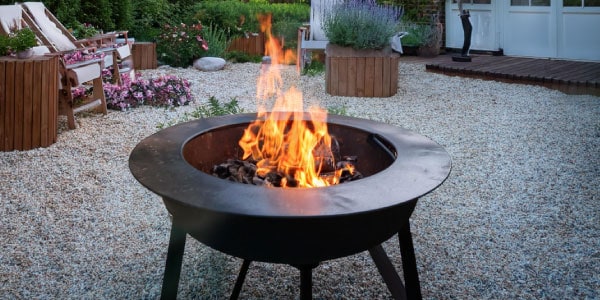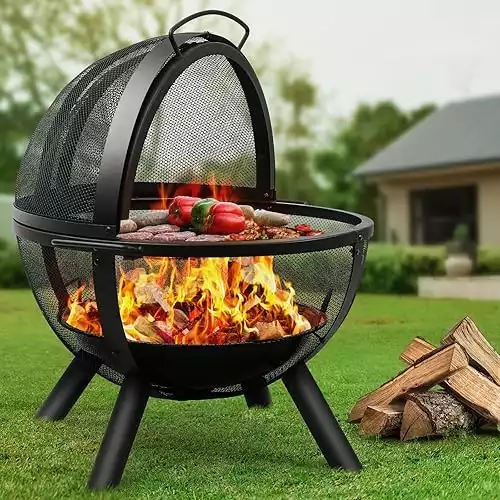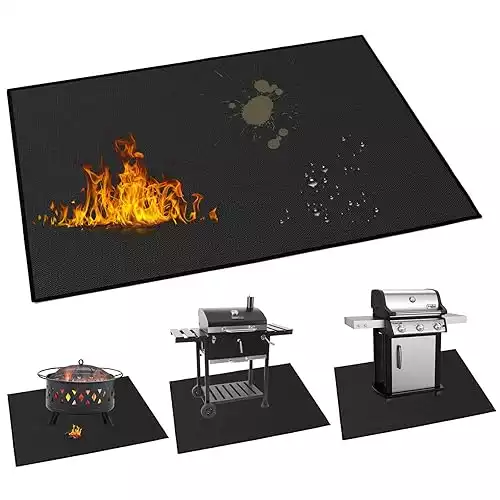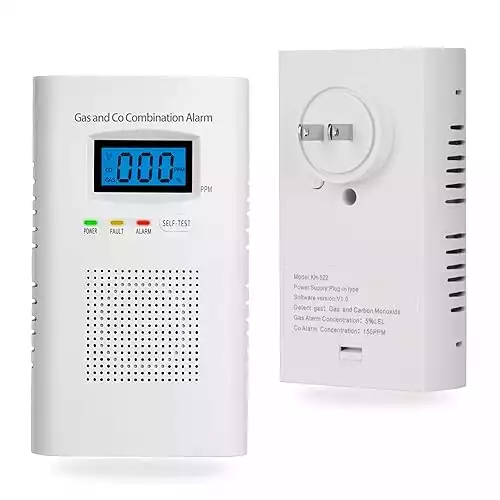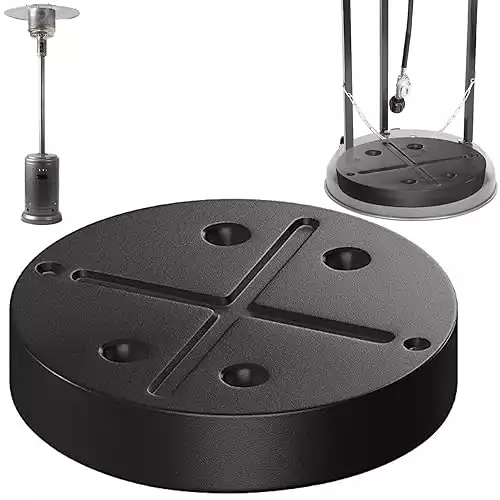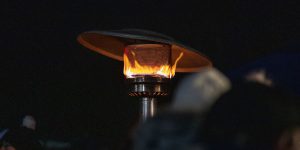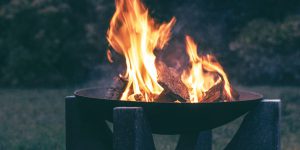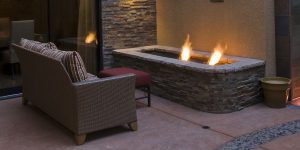
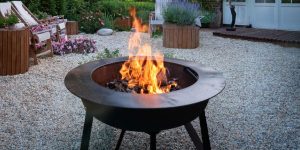
Outdoor Heating Safety Tips
Safety is paramount when you own an outdoor heater, especially if you have kids and pets; this guide’ll discuss safety tips for outdoor heaters. We’ll cover different types of heaters including propane, natural gas, electric, and infrared heaters.
We’ll explore:
- How to use these devices safely
- How to prevent potential hazards
- How to maintain your heaters to keep everything running smoothly
Whether you’re new to outdoor heating or experienced, this guide has something for everyone.
1. Choose the Right Heater for Your Space
The first step in ensuring safety is choosing the correct type of outdoor heater for your needs. Different heaters are designed to be used in different environments, and selecting the right model can prevent many safety issues.
- Propane Heaters: These are versatile and popular for outdoor heating. However, they should only be used in well-ventilated areas to avoid the buildup of carbon monoxide. Make sure to place them away from any flammable materials and check that they have a safety tip-over switch that will turn the heater off if it falls over.
- Natural Gas Heaters: These heaters are more permanent installations, often mounted on a wall or ceiling. Ensure they are professionally installed and properly vented to prevent dangerous gas buildup. Having your gas line inspected regularly for leaks is critical to avoid accidents.
- Electric Heaters: Electric heaters are often safer for smaller, enclosed spaces because they don’t emit carbon monoxide. However, you still need to make sure that they’re used according to manufacturer instructions, especially concerning electrical outlets, extension cords, and plugs.
- Infrared Heaters: Infrared heaters are highly effective for outdoor spaces and are typically safer because they do not rely on combustion. However, as they produce intense heat, they must be kept at a safe distance from people and any flammable materials.
- Fire Pit: Fire pits offer a large amount of heat in close proximity. Choose a fire pit that fits your space—opt for smaller, contained designs for compact areas and ensure proper ventilation in larger setups.
Safe and durable 35" fire pit with a deep fire bowl, mesh spark guard, airflow design, and heavy-duty steel construction. Features a hanging door, cooking grid, and stylish industrial design.
Related: Check out our list of fire pit safety tips every homeowner should know.
2. Proper Placement of Your Heater
Placement is crucial when it comes to outdoor heaters. Incorrect positioning can lead to fire hazards, improper heating, or even accidental injuries.
- Away from Flammable Materials: Never place outdoor heaters near anything that could catch fire, such as trees, plants, furniture, or awnings. Keep heaters at least 3 feet away from any objects, including fabric, paper, or wood.
- Stable Ground: Place your heater on a stable, flat surface. This helps prevent tipping over, especially for portable heaters. Ensure that any heater used in windy conditions is securely anchored or weighted down.
- Avoid Blocked Vents: If your heater has vents (which most gas and propane heaters do), be sure they are unobstructed. Blocking vents can restrict airflow and lead to dangerous situations such as overheating or the buildup of harmful gases.
- Follow Manufacturer’s Guidelines: Always read and follow the manufacturer’s recommendations about how to use and where to place the heater.
AiBOB grill mat withstands up to 1700°F, protecting decks and patios from heat, oil stains, and burns. Made of heat-resistant fiberglass and silicone, it's easy to clean and fits multiple grills.
3. Keep the Area Well-Ventilated
One of the primary safety concerns when using outdoor heaters, particularly propane and natural gas models, is the buildup of carbon monoxide. This colorless, odorless gas can be deadly in high concentrations.
- Ensure Ventilation: Ensure that your outdoor space is well-ventilated, especially when using propane or natural gas heaters. If you’re using a heater in an enclosed space, like a tent or gazebo, ensure that air can circulate freely.
- Install a Carbon Monoxide Detector: Consider placing a carbon monoxide detector in your outdoor area if you’re using a gas-powered heater. These detectors can alert you to the presence of carbon monoxide and allow you to take action before it becomes a problem.
- Turn Off When Not in Use: Always turn off your gas or propane heater when it’s not being used to prevent gas buildup.
Koabbit gas and carbon monoxide detector features high-sensitivity sensors, an LCD display, 85dB alarm, and 9V battery backup. Detects LPG, methane, natural gas, and more, with power-saving auto-off design.
Related: 4 Ways to Heat an Outdoor Deck Safely + Top Tips
4. Never Leave Heaters Unattended
Leaving your outdoor heater running when you’re not around can lead to accidents such as fire or gas leaks. Always follow these guidelines:
- Supervise the Heater: Never leave an outdoor heater running unattended, especially if it’s in an area where children or pets are present. Make sure the heater is turned off when you leave the area.
- Shut Off the Heater Properly: When you’re finished using your heater, turn it off according to the manufacturer’s instructions, making sure it cools down completely before leaving the area.
5. Maintain Your Outdoor Heater Regularly
Routine maintenance ensures that your outdoor heater runs efficiently and safely. It’s important to check for signs of wear and tear, gas leaks, or electrical issues. Here’s a quick checklist for regular maintenance:
- Inspect for Gas Leaks: For gas heaters (propane or natural gas), check for gas leaks regularly. You can apply a soapy water solution to the hose connections and gas tank. If you see bubbles, it’s an indication of a leak. Turn off the gas immediately and repair or replace the damaged parts.
- Clean the Heater: Dust, dirt, and other debris can accumulate on heaters, especially those that use combustion. Clean the heating element, burners, and reflector shields regularly to ensure efficient heating. Always disconnect the power or gas supply before performing maintenance.
- Check for Rust and Corrosion: If you’re heater is exposed to rain or humidity, before you use it you’ll want to check your heater’s components for signs of any rust. If you find rust, simply clean it off and apply a protective coating to prevent further damage.
- Replace Faulty Parts: If any components of your heater like the regulator or heating elements become damaged or stop working, replace them immediately. This helps maintain both the safety and functionality of the unit.
6. Use Outdoor Heaters Safely in Windy Conditions
Wind can be dangerous when using certain types of outdoor heaters. Windy conditions may cause the heater to tip over, blow out the flame (for gas-powered models), or disrupt the heater’s operation.
- Use Wind Shields: Some heaters come with built-in windshields that help protect the flame or heating elements. Use these shields to prevent wind from interfering with the heat output.
- Anchor the Heater: If your outdoor heater is portable, ensure it’s securely anchored or placed on a stable, non-slippery surface. Consider using weights to prevent the heater from tipping over in gusty winds.
- Avoid Using Heaters in Extreme Wind: If the wind speed is high or if there’s a storm approaching, it’s best to turn off and store your outdoor heater.
Ensure patio heater stability on windy days with this 25lb sand or water-filled base. Made of durable resin, it's easy to install, leak-proof, and provides reliable support for outdoor use.
Related: What are the Safest Camping Heaters to Buy?
7. Teach Kids and Pets About Outdoor Heater Safety
Safety is a shared responsibility. Ensure that everyone, especially children and pets, knows the risks associated with outdoor heaters.
- Keep Children and Pets at a Safe Distance: Teach your children and pets to stay a safe distance from the heater. A general rule is to keep at least 3 feet of space between the heater and any person, animal, or flammable object.
- Supervise Use: If children or pets are in the outdoor area, supervise their interaction with the heater. Never let them handle or move the heater without adult supervision.
8. Choose High-Quality Heaters
Quality matters when it comes to outdoor heating. Ensure you purchase a heater from a trusted manufacturer that meets safety standards.
- Look for Certification Marks: Heaters should have certification marks, such as the CE mark or UL label, which indicate that the product meets safety standards.
- Choose Reliable Brands: Go with reputable brands known for producing safe and reliable outdoor heaters. Read reviews and verify customer experiences to ensure you’re investing in a quality outdoor heater.
Related: Outdoor Heating Ideas to Keep Your Garden Warm
Conclusion: Stay Safe and Warm
Outdoor heaters are a fantastic way to extend your time outside and enjoy chilly evenings, but safety should always come first. By following these essential outdoor heating safety tips, you can ensure that you stay warm without putting yourself, your loved ones, or your property at risk.
From choosing the right type of heater to maintaining it regularly, being mindful of ventilation, and ensuring safe usage in all conditions, these tips will help you get the most out of your outdoor heating system while keeping safety a top priority.
Stay safe and warm, and make your outdoor space a cozy retreat all year!
FAQs
1. What are the safest types of outdoor heaters?
The safest outdoor heaters are electric and infrared heaters, as they do not produce harmful gases like propane or natural gas heaters. However, gas heaters, including propane and natural gas models, can also be safe if used correctly and placed in well-ventilated areas. Always follow the manufacturer’s safety guidelines and place heaters on stable, flat surfaces to reduce risks.
2. How do I prevent carbon monoxide buildup from outdoor gas heaters?
To prevent carbon monoxide buildup from outdoor gas heaters, ensure proper ventilation in the area where the heater is used. For propane and natural gas heaters, avoid using them in enclosed spaces. You can also install a carbon monoxide detector in your outdoor area to alert you to dangerous gas concentrations. Always turn off the heater when not in use.
3. What should I consider when placing my outdoor heater?
When placing your outdoor heater, consider keeping it at least 3 feet away from any flammable materials, including trees, plants, furniture, and fabrics. Ensure the heater is on a stable surface to prevent tipping, and always follow the manufacturer’s guidelines for placement to avoid hazards like overheating or gas leaks.
4. How can I maintain my outdoor heater for optimal safety?
To maintain your outdoor heater, regularly inspect it for gas leaks by applying a soapy water solution to hose connections. Clean the heater’s heating elements and vents to remove dust and debris, and check for any signs of rust or corrosion. If you notice any damaged components, replace them immediately to ensure safe operation.
5. Is it safe to use outdoor heaters in windy conditions?
Using outdoor heaters in windy conditions can be risky, as strong winds may cause the heater to tip over or blow out the flame. To prevent accidents, use heaters with built-in wind shields, place the heater on a stable surface, and avoid using them during extreme wind conditions. If necessary, anchor the heater or weigh it down to prevent tipping.




